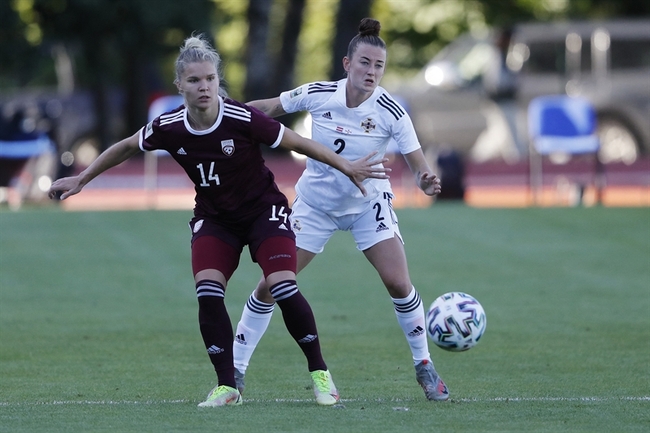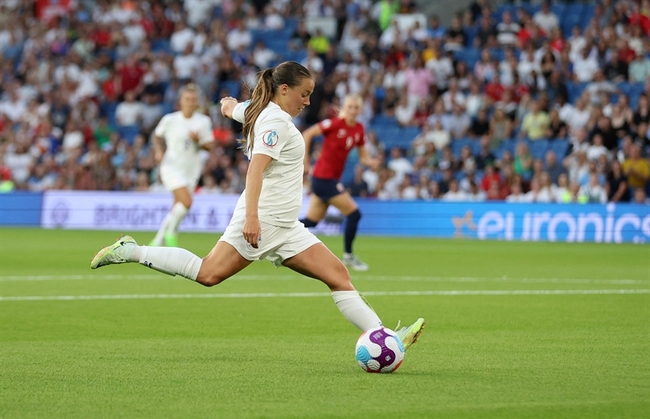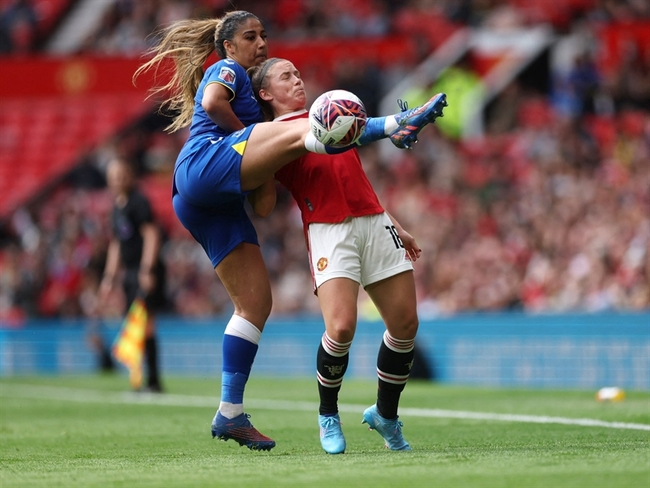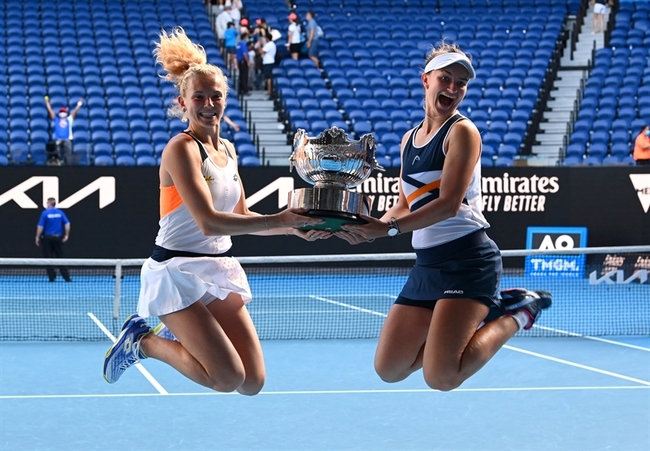Advice to discharged athletes: don't play right away

Athletes quarantined or ordered to stay home, especially ones who were previously furloughed due to injury, have limited opportunities to exercise in a way that simulates match play. Once communities lift the social distancing guidelines, those on the injured list will be healed enough to return to play. However, will they be more vulnerable to injury after this hiatus? A Swedish study sheds some light on how the frequency of training after injury impacts vulnerability once athletes return to play.
Scientists chose to examine the incidence of injuries in elite soccer players returning to match play after an injury for a couple of reasons. Firstly, the rate of injury in match play is known to be much higher (seven times more) than in training(1). Secondly, the greatest predictor of injury in soccer is a previous injury(1). Therefore, researchers wondered how to lower the risk of previously injured athletes returning to competition. They hypothesized that the number of training sessions the athlete participated in between being cleared for return to play and their first match game influenced their injury risk.
The study analyzed data already collected from a previous prospective cohort study of elite European soccer club teams from 2001 to 2007. During this time, the teams reported 16,087 injuries(1). The study followed 4088 injured players from 64 premier teams in the Union of European Football Association.
The Swedish researchers defined injury as
“any physical complaint sustained by a player that resulted from a football match or football training and led to the player being unable to take full part in future football training or match play(1).”
They described return to play as medical clearance to resume training and match play. The paper did not indicate if the players continued with rehab activities in addition to training once they returned to team workouts, nor did they give details about their injury and rehab. The study excluded injuries if the player missed less than eight days of play, their first match back was a friendly or otherwise practice match, or the first match wasn’t played within 10 training sessions after medical clearance. That left the researchers with 4,805 injury episodes to analyze.
They sorted the injured athletes into groups that experienced zero/one to 10 training sessions before first match play after clearance to return to sport. Over 75% of the athletes participated in five or fewer training sessions before their first match. They then analyzed the 10 groups during their opening match to discover how many of the athletes in each group suffered another injury during their first match back? Of the 4,805 athletes, 219 experienced a subsequent injury during their first return match. They determined that athletes returning to match play had a 4.6% risk of reinjury and a rate of injury at 46.9 injuries / 1000 match hours(1). This rate was significantly more than the 25.0/1000 match hours rate of injury in regular match play.
Did the number of post-rehab training sessions affect an athlete’s injury risk? The researchers found that the odds of suffering another injury decreased by seven percent for every training session completed prior to match play. Therefore, the more trainings athletes participate in before they return to competitive play, the less likely they are to suffer another injury.
Ready or not
Athletes play much harder during competition than simulation. This exertion has to do with motivation to overcome fatigue, as explored here. A recently-recovered athlete may not tolerate the sudden increase in load from rehab to competition and could subsequently suffer another injury. While team training appears to be a necessary bridge between clinic-based rehab and competing, this study may point to a lack of adequate effort during rehab.The role of rehabilitation is to prepare the patient to return to their full function, whatever that may be. The rehab goals for a stroke victim might be to independently transfer to their wheelchair, or ambulate safely to the kitchen. An athlete should have similarly appropriate goals before discharge. Evaluating strength and range of motion in a vacuum does nothing to ensure that the athlete is functional in their environment.
To simulate an athlete’s competitive situation requires more space and effort on the part of the clinician. It demands that the therapist evaluate tolerance to loading by looking at the biopsychosocial issues that surround pain and fatigue to gauge if the athlete lacks the ability or rather, the motivation to exert the effort. The athlete may also need to take responsibility for their preparation by doing aerobic and strength workouts outside of the clinic to stay fit and strong, in addition to the therapeutic exercise. If the rehab professionals don’t take the initiative to offer this type of transitional training before return to sport, they must inform the team that the athlete needs further game-like conditioning.
According to this study, to decrease the chance of reinjury, previously injured elite soccer athletes should participate in a minimum of five additional training sessions after discharge from rehab before returning to play. When the limits on social distancing are lifted, and athletes return to competition, coaches should be careful not to resume match play too quickly. Requiring players to participate in 10 training sessions before competitive play resumes may have a protective effect in keeping returning players injury-free.
Reference
- B J Sports Med. 2020;54:427-432
You need to be logged in to continue reading.
Please register for limited access or take a 30-day risk-free trial of Sports Injury Bulletin to experience the full benefits of a subscription. TAKE A RISK-FREE TRIAL
TAKE A RISK-FREE TRIAL
Newsletter Sign Up
Subscriber Testimonials
Dr. Alexandra Fandetti-Robin, Back & Body Chiropractic
Elspeth Cowell MSCh DpodM SRCh HCPC reg
William Hunter, Nuffield Health
Newsletter Sign Up
Coaches Testimonials
Dr. Alexandra Fandetti-Robin, Back & Body Chiropractic
Elspeth Cowell MSCh DpodM SRCh HCPC reg
William Hunter, Nuffield Health
Be at the leading edge of sports injury management
Our international team of qualified experts (see above) spend hours poring over scores of technical journals and medical papers that even the most interested professionals don't have time to read.
For 17 years, we've helped hard-working physiotherapists and sports professionals like you, overwhelmed by the vast amount of new research, bring science to their treatment. Sports Injury Bulletin is the ideal resource for practitioners too busy to cull through all the monthly journals to find meaningful and applicable studies.
*includes 3 coaching manuals
Get Inspired
All the latest techniques and approaches
Sports Injury Bulletin brings together a worldwide panel of experts – including physiotherapists, doctors, researchers and sports scientists. Together we deliver everything you need to help your clients avoid – or recover as quickly as possible from – injuries.
We strip away the scientific jargon and deliver you easy-to-follow training exercises, nutrition tips, psychological strategies and recovery programmes and exercises in plain English.






